We had been driving for hours. The dirt road ground by under the tires of the Bronco. We had music on the tape player, and I tried not to fall asleep against the door for fear of being smacked awake as the truck slid through another washboard corner. I did fall asleep though, the stars barely perceptible out the window under the high beams. When I awoke it was quiet, silent. The air was cold, the high beams were still on and my dad’s door was open but he was gone. I couldn’t see a thing out in front of the truck. I got out and looked around and couldn’t see him. We were parked near a giant abyss in the desert that high powered halogen lamps couldn’t illuminate. What I saw was this:
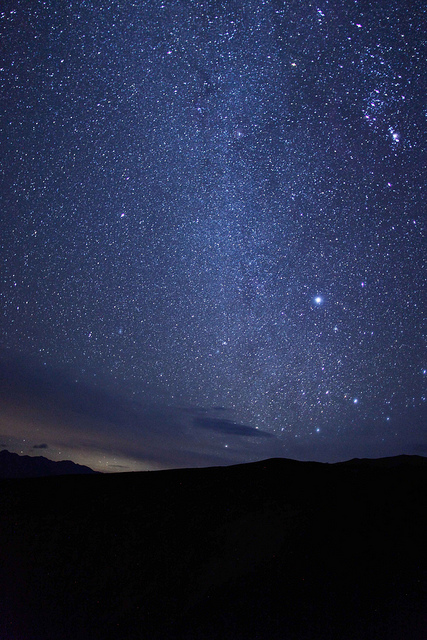
I was 12 or 13 and my dad and I were on a ski trip to Mammoth Mountain on the Eastern Sierra Nevada Mountains in California. My dad decided to take a detour through Death Valley National Park. We had stopped at Ubehebe crater, a destination my day saw on the map and wanted to see.
It was kind of scary to stand on the edge of a big black hole in the ground with no clue how deep it was. My dad came walking across the parking lot from here he had gone to take a pee. The plan was to sleep in the back of the truck right there in the parking lot and see the crater in the morning. I didn’t like that idea, so we drove down the road and camped somewhere else. When we went back in the morning, we saw this:

Ubehebe Crater is [not] Really Old
Conventional wisdom is that things on the ground are really old. That only makes sense. You can’t see the ground move, and the land under your feet is the most solid, consistent, trustworthy thing you can find. But we know that new land is forming all the time in the oceans, so it shouldn’t come as a huge surprise that Ubehebe Crater isn’t as old as we thought.
Rather than being several thousand years old, it and nearby smaller craters appear to have been the result of a series of explosions, the largest and most recent of which was 800 years ago. [National Geographic]
Ubehebe Crater Facts
Ubehebe Crater is a volcano caused by magma coming into contact with water causing explosive steam. This is called a Maar Volcano:
How did these craters originate? They are known as maar volcanoes, created by steam and gas explosions when hot magma rising up from the depths reached ground water. The intense heat flashed the water into steam which expanded until the pressure was released as a tremendous explosion.The western cluster of Maar volcanoes was the first to form, then the southern cluster, followed by Ubehebe—the largest of them all—possibly as recently as 300 years ago. [National Parks Service]
Steam expansion can move many tons of rock because steam takes up 1600 times more space than water. That means that if you have 1 liter of water and you heat it enough to make steam, it would now take up 1600 liters of space. Imagine if you did that really quickly inside a balloon. The balloon would go from regular size to the size of a house in an instant. Burry that under rock and you have enough pressure to make a sizable hole in the ground.
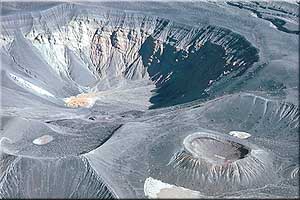
- Width: 1/5 mile
- Depth: 500 – 777 feet
- Original Estimated Age: 2,000 to 7,000 years
- Revised Estimated Ag: 800 years
- Pronunciation: YOU-bee-HEE-bee
- Meaning: The word Ubehebe is a native american word meaning, “Big basket of rock.”
Ubehebe Images


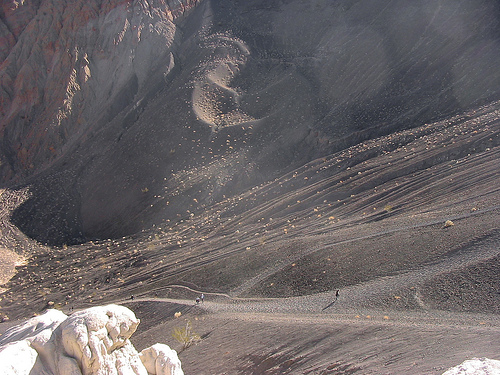

Don’t miss Ubehebe Crater if you head to Death Valley. While you’re there, check out the mysterious Race Track Playa as well. You can find out more about visiting Ubehebe Crater at the National Park Service website.
-Mike


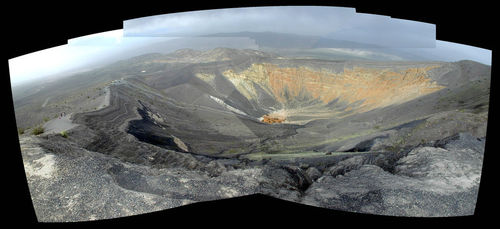
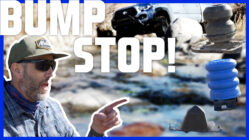


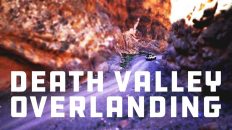
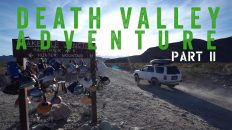

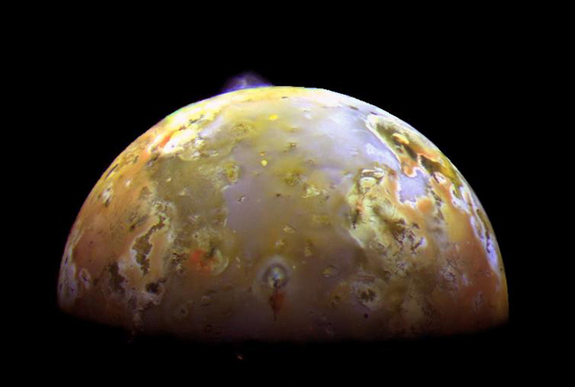

Add comment